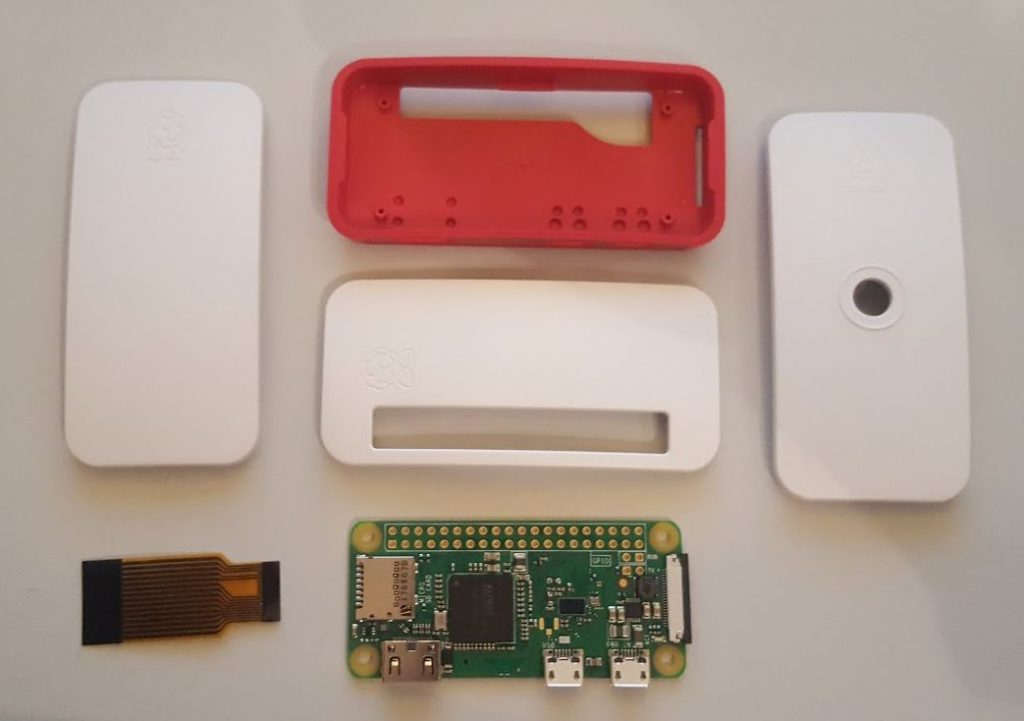Last Updated on 31. Mai 2019 by sfambach
Der kleine Bruder des Raspberry kommt mit einer WLan Karte und reduzierten Schnittstellenumfang. Er bestitzt einen Mini-HDMI Anschluss und einen Micro USB Anschluss für Periferie wie Mouse, Tastatur, USB-Festplatten usw.. Die GPIO-Pins müssen beim Zero W selbst aufgelötet werden. Wie unten zu sehen ist, gibt es ein Standardgehäuse mit passenden Ausparungen.

Daten im Überblick
| Name | Raspberry Pi zero | Arduino Nano 33 BLE |
|---|---|---|
| Anzahl/CPU | ARM1176JZF-S | 1 / 64 MHz Arm® Cortex-M4F (with FPU) |
| Takt (MHz) | 1000 | 64 |
| Kerne | 1 | 1 |
| Digital IOs / Pins | 26 | 14 |
| Analog inputs | – | 8 |
| Interrupt Pins | ? | 14 |
| PWM | 2 | 14 |
| SPI | 1 | 1 |
| Flash Speicher | micro SD Karte | 1MB |
| SRam (KB) | 512 | 256KB |
| EEPROM (KB) | – | – |
| WiFi | 2,4 GHz, 802.11 b/g/n | – |
| Verschlüsselung | WEB / WPA2 / TKIP /AES | – |
| Bluetooth | 4.1 | NINA-B306 Module Bluetooth® Low Energy 5.0 Module Bluetooth® 5 multiprotocol / Zigbee |
| UART | 1 | 1 |
| I2C | 1 | 1 |
| Ethernet | – | – |
| Video | Micro | – |
| Sound | HDMI digital | – |
| Sonstiges | – | LSM9DS1 (9 axis IMU) MPM3610 DC regulator NFC-A tag Nina B306 |
| USB | – | 1 Micro |
| Betriebsspannung [V] | 5 | 3,3 |
| Eingangsspannung | 5 | 21 |
| Strom (mA) / Standby (mA) | 80-120 | 30 |
| Größe l x b x h | 65 x 31 x 5 | 43,16 x 17,7 |
| Gewicht [g] | 9 | 5 |
Pining
Das Pinning ist mit dem Raspberry Pi 2 B+ gleich.

